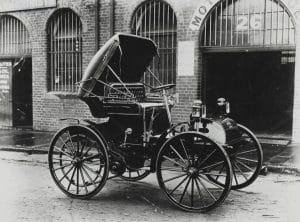Couture Elevating Identities Beyond Conventional Design
Couture fashion is known for its one-of-a-kind designs, exquisite craftsmanship, and attention to detail. It is a world where luxury, creativity, and innovation collide to create wearable works of art. For decades, this exclusive realm of fashion has catered to a select few, adorned by celebrities and revered by the fashion elite. However, in recent years, there has been a shift in the couture landscape as designers have started using their platform to elevate identities beyond conventional design. Let us explore how couture is breaking free from its traditional confines and embracing diverse cultural representations to redefine the very concept of fashion itself.
The Evolution of Couture
The term “couture” originated in Paris in the 1800s and referred to made-to-measure garments created by highly-skilled artisans. It was a symbol of exclusivity and luxury, catering only to the elite and wealthy. Couture houses like Chanel, Dior, and Givenchy set the standard for luxury fashion and their designs were regarded as the epitome of sophistication and glamour. However, as fashion became more accessible to the masses, the desire for uniqueness and individuality increased, challenging the traditional notion of couture.
Designers started incorporating diverse elements into their collections, taking inspiration from different cultures and lifestyles. The rise of social media also played a major role in the evolution of couture, as fashion enthusiasts from all over the world were exposed to different styles and aesthetics. This cultural exchange not only diversified the couture landscape but also encouraged designers to push boundaries and explore new concepts.
Couture and Cultural Representation
The representation of diverse cultures in fashion has become a crucial aspect of contemporary couture. Designers are now using their collections to challenge societal norms and celebrate different identities. In 2019, designer Pierpaolo Piccioli from Valentino presented a collection that paid homage to black culture and its influence on the fashion industry. The show featured models from various African countries, and the designs incorporated traditional African textiles and patterns.
Another prime example is the couture house Schiaparelli, which has been working with African embroidery workshops for over 20 years, promoting the preservation of ancient handicraft techniques and providing sustainable economic opportunities to local communities. This not only showcases the diversity of African culture but also serves as a platform to empower marginalized communities.
Redefining Gender Norms
Couture fashion has also been at the forefront of breaking gender stereotypes and challenging traditional notions of masculinity and femininity. Designers like Viktor & Rolf, Maison Margiela, and Jean Paul Gaultier have been known for their avant-garde designs that challenge gender norms and encourage self-expression. Their collections often feature gender-fluid models donning pieces that blur the lines between masculine and feminine aesthetics.
Couture also highlights the significance of androgyny, where masculine and feminine elements are fused to create unique and unconventional designs. This trend has been embraced by numerous designers, including Alessandro Michele from Gucci, who has been incorporating androgyny in his collections since he took over as creative director in 2015. His pieces not only challenge traditional gender roles but also showcase the beauty of embracing one’s true self, regardless of societal expectations.
The Future of Couture
The future of couture is shaping up to be diverse, inclusive, and boundary-pushing. Designers are no longer limited to solely creating extravagantly luxurious designs, but are using their platform to provoke conversations and celebrate individuality. Furthermore, with the rise of sustainability and ethical fashion, couture is also evolving to become more environmentally conscious, promoting responsible practices in its production.
In today’s world, where diversity and inclusivity are championed, it is no surprise that couture has also embraced this movement. Designers are no longer bound by conventional design principles and are using their craft to elevate different cultures, identities, and forms of self-expression. The future of couture is an exciting one, and it is safe to say that it will continue to surprise and inspire us with its unique representations and trailblazing designs.
In Conclusion
Couture has come a long way from its traditional roots and is now a catalyst for diversity, inclusivity, and cultural representation in the fashion industry. As designers continue to push boundaries and defy societal norms, the world of couture is evolving into a more inclusive and empowering space. It is no longer just about creating beautiful garments but also about using fashion as a medium to embrace individual identities and celebrate diversity. Couture truly has the power to transform and elevate beyond the constraints of conventional design.









